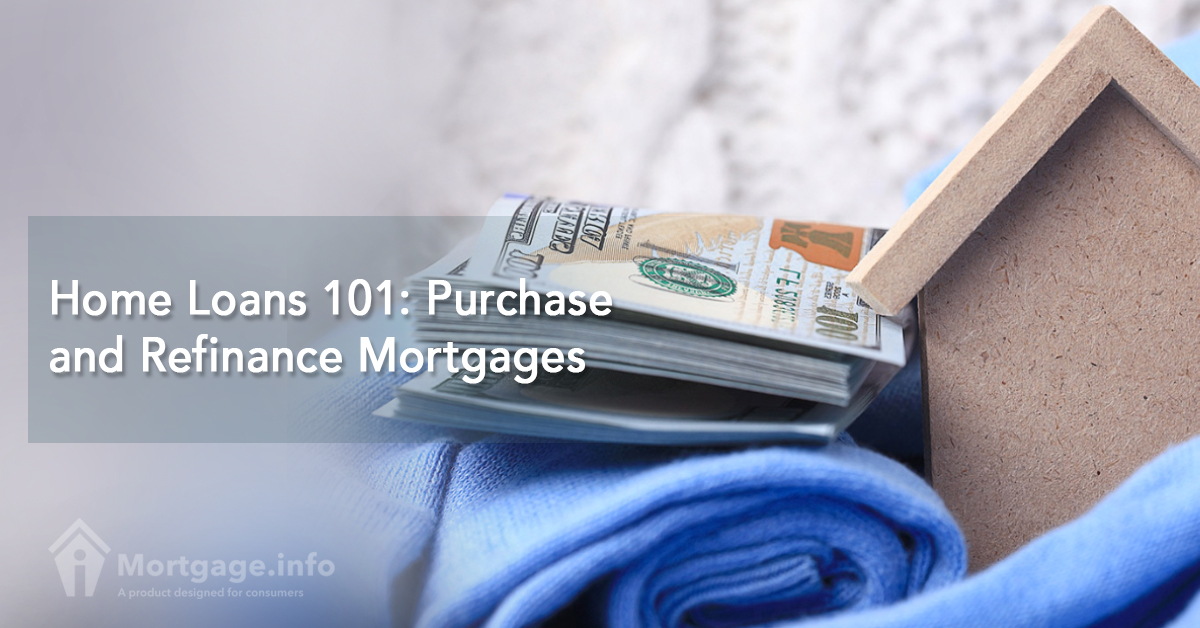Mortgages are a handful with their army of technical terms and concepts. Still, there are two basic concepts you can start with: purchase and refinance. Getting to know how these home loans work in general is the first step in breaking down the mortgage wall.
Two Types of Home Loans
Home loans can be broadly classified as:
- Purchase mortgages
- Refinance mortgages
You apply for a purchase mortgage to buy a home or get financing for it. A refinance mortgage is used to “re-finance” the existing mortgage, i.e. your purchase mortgage.
Thus, it’s normal to have a purchase mortgage but no refinance mortgage. But you can’t obtain a refi mortgage or do refinancing if there’s no purchase mortgage to refinance with.
Their Purpose
Purchase mortgages help you become a homeowner. And refinance mortgages enhance that role further as you can change some terms of your existing purchase loan to your favor.
Basically, you can refinance your current mortgage to do any of the following:
- Get a lower rate. A half-point difference in rates goes a long way for some homeowners who can use the monthly savings for other expenses. Of course, you have to factor in the closing costs and when these costs will be recouped by your savings.
- Change your (loan) term. You can either delay the payoff date of your loan or shorten the period to repay it faster. One big consideration is at which point you are in your purchase loan. This helps you decide whether it’s more costly to stick to your original loan schedule or that it’s more cost-effective to delay it further or cut it back to save on interest payments.
- Change your loan type. Adjustable-rate mortgages have rates that adjust after a certain fixed period. The period following this is critical because rates can go up or down. Because ARMs carry uncertainty as to monthly payments, it’s often recommended to switch to fixed-rate mortgages that offer stability with fixed rates and fixed payments throughout the life of the loan.
- Take cash out. You can do a cash-out refinance if your home has significant equity, which is the current value of your home minus the outstanding balance of your mortgage. Cash-out refinance is useful to eliminate other debts, fund university tuition or a trip abroad, or upgrade or repair one’s home.
- Combine two mortgages. You refinance to combine the first mortgage, which is your purchase loan, with a second mortgage, which can be a home equity loan or home equity line of credit. Two main perks of mortgage consolidation are a simplified singular payment and a lower rate for both mortgages.
- Remove or add names. The only way you can get a loved one or a ex-spouse off your mortgage contract is through a refinance. It’s also the only way to add a new co-borrower or co-signer to the mortgage.
Their Process
Getting home loans for purchase or refinance follows a familiar process. Actual underwriting and lending practices do vary among lenders.
First, you need to submit a mortgage application. You submit documents along the way, as needed by the lenders. But these are standard requirements:
- Credit report
- Pay stubs
- Tax returns
- Form W-2s
Second, you go through credit and income verification. Lenders will look at your credit to determine what rates you qualify for and income to find out your ability to repay your debt vis-a-vis existing obligations.
Third, you present your available funds. lenders want to see if you have enough reserves to cover closing costs and pay points. These funds are different from the down payment you need to buy a home.
Fourth, your lender obtains an appraisal of the home. This is to determine whether the value of your home is worthy of the lender’s financing for a home purchase loan, or whether its value is adequate for a refinance.
If your loan has a high loan-to-value ratio, which happens when there is less than 20% equity in the home due to a small down payment or the home value depreciating, you will have to pay a private mortgage insurance. This allows you to get the mortgage despite the equity shortfall.
A lender usually takes into account all factors that make your loan application. Before you apply for any home loans, always research and prepare your credit ahead to get the best rates.

